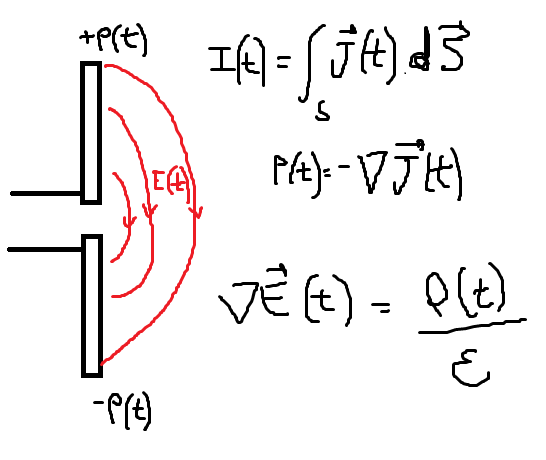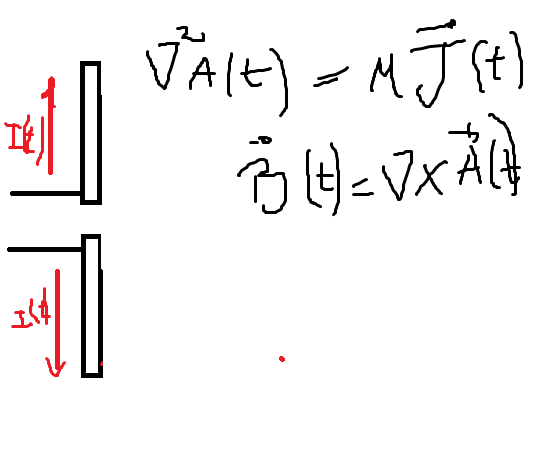Antenna fields and the form to calculate it
But, It's possible to know the fields starting for the potential different in the antena, because the potential different create an electric field, so we can know first the capacitance and the charge density in times function and whit it the electric field.
I do not know if I'm clear .
Well, you didn't ask any questions. That's probably a good place to start.
The "potential difference" inside an antenna won't tell you much, primarily because its not uniquely defined where dynamic magnetic fields exist, but also because its a scalar value. In antennas, you need to know where the charges are and what they're doing.
hi julian,
you are talking about parallel plate capacitor here. DC current applied to parallel plate which creates capacitance. this principle of operation is total different from an antenna! for antenna, you fed RF/microwave at the input.
Well, for example if I want to know the antenna's intensity power at a distance, I can calculate the antenna's capacitance and knowing the potential difference apply I can know the charge distribution along atenna. So with it I can get the electric field because the divergence of E is equal to the charge density. With the electric field I can calculate the poynting's vector. It's a mistake calculate it in that form?
Or only I have to do is knowing the current, calculate de A (potential vector) and whit it get the magnetic field and the electric field (if I want)?
hi julian,
i still believe that you shouldn't use capacitance theory to predict antenna radiated power at some distance. you can use friss equation to predict what distance you can achieve for specific power or viceversa.
From capacitance?
It seems like your trying to take a bunch of material from TEM-mode, DC cases and apply it to antennas. This is usually a bad idea, in general -- although it may be valid if you were analyzing say, a patch antenna (which uses a TEM mode).
I know how to calculate the field radiation on TEM by knowing the current i(t) which flow along the antenna and whit it calculate the A(t) where B(t) = rot (A(t)) , etc.
But someone can think in this way, if there are a current which deppent of times in dipolar antenna, there are a charge density variation too, so there is a potential variation across the antenna poles and there is E(t).
Like this:

And if I know the E(t) I will know B(t) and poynting vector.
But the general people get the fields like this:

hi julian,
its a good discussion. the field propagates between the plates and also to surroundings/air. but if you want to calculate the current/electric field which goes to the other plate only, i dont know how to calculate that alone!
please refer to the link below for calculation of current distribution for dipole antenna.
http://www.antenna-theory.com/antennas/dipole.php
